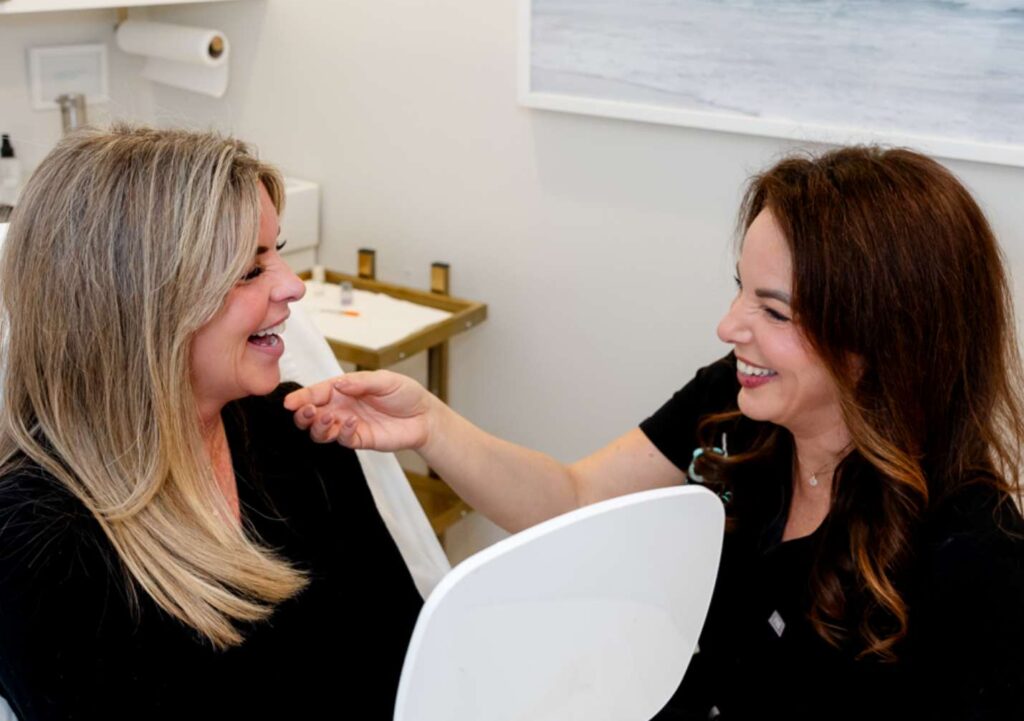
The human vagina has the powerful capacity to retain its shape after stretching. However, certain processes such as childbirth and aging can diminish the vagina’s elasticity. As people get older, their bodies slow the production of collagen, which is an important building block for skin, muscles, bones, and blood. Lost collagen weakens the skin and muscles, causing feelings of vaginal looseness. Childbirth, too, can stretch the vaginal muscles beyond their regular capacity, which leads to changes in shape and elasticity.
Though vaginal laxity is common, it can have uncomfortable side effects, including urinal incontinence, stress incontinence, and diminished feelings of pleasure during sexual intercourse. In the past, one of the only ways to medically treat a loose vagina was to get a vaginoplasty –– a surgical procedure designed to tighten stretched muscles. However, because these procedures are invasive, vaginoplasties also carry risk of infection, bleeding, pain, and other complications.
Fortunately, newer medical innovations have made it possible to revive vaginal tissues without surgery. Case in point, the Viveve Vaginal Rejuvenation treatment uses deep heating to stimulate collagen production and restore vaginal elasticity. Through this method, Viveve treatments can improve vaginal sensitivity, increase vaginal lubrication, and make intercourse more comfortable and pleasurable. Below, we’ll take a look at the basic steps of getting a Viveve treatment.
Step One: The Consultation
If you’ve assessed that you need a Viveve treatment, the first thing to do is book a consultation. Often, the first person you will meet during the process will be your nurse practitioner. Trained to provide a personal touch to healthcare, nurse practitioners have advanced skills in assessing patient health in a compassionate manner. Your practitioner will ask you questions about your concerns, goals, and expectations, and then use your health information to evaluate whether you are a good fit for the procedure.
Certain conditions can make patients unfit for Viveve treatment. Notably, patients who are currently pregnant, breastfeeding, experiencing symptoms of sexually transmitted diseases, or receiving radiation therapy or chemotherapy cannot safely receive Viveve treatment. Patients who use implantable electrical medical devices, such as pacemakers and defibrillators, are also unfit to receive Viveve treatment.
Step Two: The Procedure
During your procedure, your practitioner will insert the tip of the Viveve device into your vaginal opening. The treatment uses cryogen-cooled monopolar radiofrequency (CMRF) to deliver pulses of heat onto your vaginal tissue, which stimulates collagen production. The treatment then cools to make the procedure more comfortable.
Because it alternates between heating and cooling, the procedure is never painful or uncomfortable. Side effects from Viveve treatment are extremely rare.
Step Three: Recovery
Viveve treatments are non-invasive, which makes recovery simple and comfortable. Nevertheless, you should avoid physically strenuous activities immediately following the treatment. To give your vaginal tissues time to heal and restore collagen, postpone intercourse for at least 24 hours after the treatment.
Results tend to become apparent within three weeks of receiving Viveve treatment. Peak restoration typically shows up after three months, and can last for more than a year. And though Viveve was designed to be a single-session treatment, patients can also get touch-ups after their first appointments to maintain good results.
Though it is normal for vaginal tissue to weaken over time, vaginal laxity can get in the way of quality intimacy, confidence, and comfort. Fortunately, the Viveve treatment can restore your vaginal tissues in a safe and comfortable way.
Written exclusively for Onaskin.com
by Alicia Cottonfields



